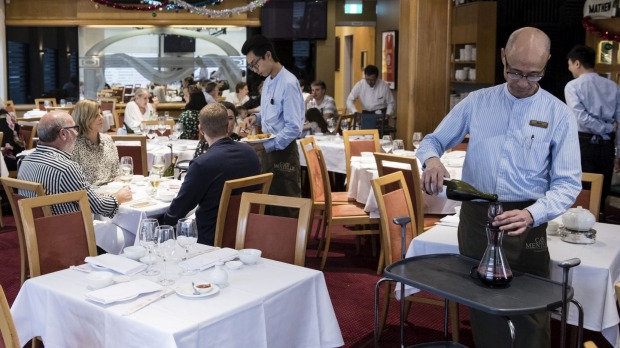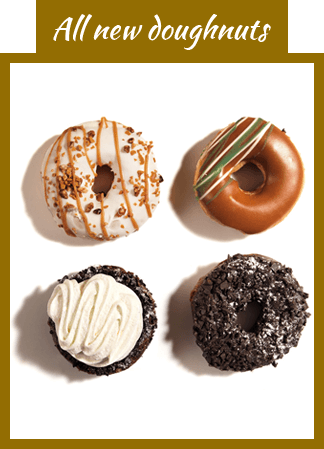Sydney restaurant trends come and go like Uber Eats drivers in the night. Yesterday’s avocado mousse is today’s miso caramel, and for every poke bowl store that closes, a ramen bar or gelato joint opens.
In spite of these changing trends and a public thirst for “the new”, a handful of family-owned Chinese and Italian restaurants are thriving 35 years after being featured in the first edition of The Sydney Morning Herald Good Food Guide.
Almost every restaurant listed in the first Guide that is still operating today is a Chinese eatery (Peacock Gardens in Crows Nest, for example, plus North Strathfield’s Liu Rose and CBD yum cha temple Marigold) or Italian fine-diner such as Beppi’s in East Sydney and Lucio’s on leafy Windsor Street, Paddington.

“It’s food that’s reliable,” says David Dale, co-editor of the first Guide in 1984 under former Herald restaurant critic Leo Schofield.
“You know if you go to a Chinese or an Italian restaurant, it might not feature a genius chef in the kitchen, but it will be somebody who understands the culture – and they are both cultures which value good food.”
Kim Terakes, a Guide senior reviewer throughout the nineties, says Chinese food remains popular due to its family friendly nature and flavour profiles of sweet, salty and sour that are attractive to most people.

“Kids can eat Chinese food happily,” he says. “Peacock Gardens is chockers with families every weekend and it’s almost impossible to get a table. It’s not [Neil Perry’s] Spice Temple, but they serve bloody good spring rolls and people love the restaurant like an old pair of slippers.”
Peacock Gardens opened in 1975 with a level of silver service rare for a Sydney Chinese restaurant. “I am an old school restaurateur,” says the institution’s owner, Mathew Chan. “A lot of our success comes down to getting to really know our customers and knowing what they like so we can ensure they enjoy themselves.”
Marc Polese took the reins of Beppi’s when his father, Beppi Polese, passed away in 2016 on the eve of his Yurong Street restaurant’s 60th anniversary. He supports Chan’s belief that customer satisfaction is paramount to success.
“If the customer wants a well-done steak, they can have a well-done steak,” he says. “It might not be what we recommend, but so be it.”
There has been a larger number of high-profile restaurant closures than usual for Sydney in the last 12 months, due to factors such as rising labour costs and a stagnant economy. Polese says it’s business as usual at Beppi’s, however, and the restaurant has operated for so long thanks to “an immigrant who saw an opportunity in Australia and worked extremely hard”.
“Dad’s hard work, combined with his frugal nature after living through the war, meant our family could tough out the hard times. He saved a lot too, so we could have a war chest to get through the rough weeks and months that happen in the [restaurant] industry all the time.”

Polese says it’s a challenge for a restaurant with the history of Beppi’s to keep the menu feeling fresh while also satisfying customer expectations.
“People will always want the gnocchi gorgonzola, say, but I’ll tweak the menu here and there to keep things contemporary,” he says. “I don’t want the restaurant to ever feel old in a bad way, but at the same time it’s important to maintain tradition and a sense that we’re not chasing fads.”
Lucio’s founder, Lucio Galletto, also believes it’s important to maintain restrained creativity at a restaurant built on repeat business and tradition.

“My motto has always been ‘follow the seasons not the fashions’,” he says. “I’m lucky to have my wife and children working at the restaurant to keep me young and make my life interesting. We’re always talking about food and how to change the menu as I never want things to feel stale. You have to be very, very careful, though. Sometimes it can be too much.”
Galletto says he has looked forward to coming to work at his two-hatted restaurant every day since it opened in 1983.
“Sometimes I go home at night and say ‘basta!’, which means ‘no more’, but then I’m back the next day, even earlier.”

The Good Food Guide‘s third annual national edition will be on sale from October 1 in newsagencies and bookstores, and is also available to pre-order at thestore.com.au/gfg20 for $29.99 with free shipping.
What was hot in the first Sydney Morning Herald Good Food Guide
Bookended by “American” and “Yugoslav”, the inaugural Guide‘s cuisine index includes 77 French restaurants (the current edition lists eight in Sydney), five Thai eateries, a smattering of venues categorised as “eclectic” and even one filed under “crepes”.
The French pancake was a restaurant mainstay in 1984, stuffed with everything from smoked salmon to fruit and nuts. Chefs were also camembert obsessed, and if the white cheese wasn’t baked and served with cranberry sauce, it was stuffing chicken, topping schnitzels and capping lunch with a liqueur-laced coffee.
Other trends that have gone the way of the salad bar include fish mousse, Sherrin-sized eclairs and mango sauce suffocating anything that once lived in the sea. Competitively priced yum cha, meanwhile, is described as growing “extraordinarily in popularity during the recent recession” and McDonald’s gets a nod for making chips better than Doyles at Watsons Bay (for whatever that’s worth).











